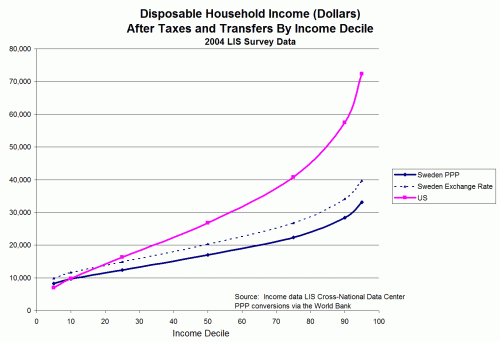Inequality Metrics Exclude Effects of Government Actions to Reduce Inequality
I have seen this fact a number of times and am always amazed when I read it, since poverty figures are never, ever presented with this bit of context
LBJ promised that the war on poverty would be an "investment" that would "return its cost manifold to the entire economy." But the country has invested $20.7 trillion in 2011 dollars over the past 50 years. What does America have to show for its investment? Apparently, almost nothing: The official poverty rate persists with little improvement.
That is in part because the government's poverty figures are misleading. Census defines a family as poor based on income level but doesn't count welfare benefits as a form of income. Thus, government means-tested spending can grow infinitely while the poverty rate remains stagnant.
Rector argues that poor today is very different than poor in Johnson's day, and that perhaps we might celebrate a bit
Not even government, though, can spend $9,000 per recipient a year and have no impact on living standards. And it shows: Current poverty has little resemblance to poverty 50 years ago. According to a variety of government sources, including census data and surveys by federal agencies, the typical American living below the poverty level in 2013 lives in a house or apartment that is in good repair, equipped with air conditioning and cable TV. His home is larger than the home of the average nonpoor French, German or English man. He has a car, multiple color TVs and a DVD player. More than half the poor have computers and a third have wide, flat-screen TVs. The overwhelming majority of poor Americans are not undernourished and did not suffer from hunger for even one day of the previous year.
Remember what I presented a while back. This is what the Left thinks, or wants us to think, American income inequality looks like -- our rich are richer than comparable European welfare states because our poor are poorer.
And this is what income inequality in the US actually looks like -- our rich and middle class are richer, but our poor are not poorer. A less redistributionist approach floats all boats. I compared the US to many European welfare states, using the Left's own data source. Here is an example, but hit the link to see it all.

